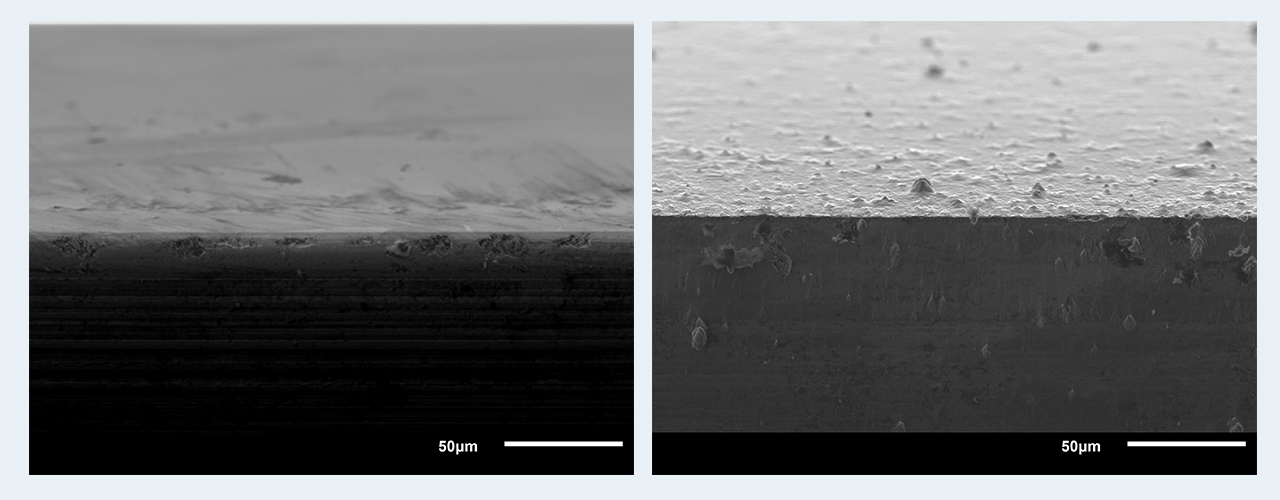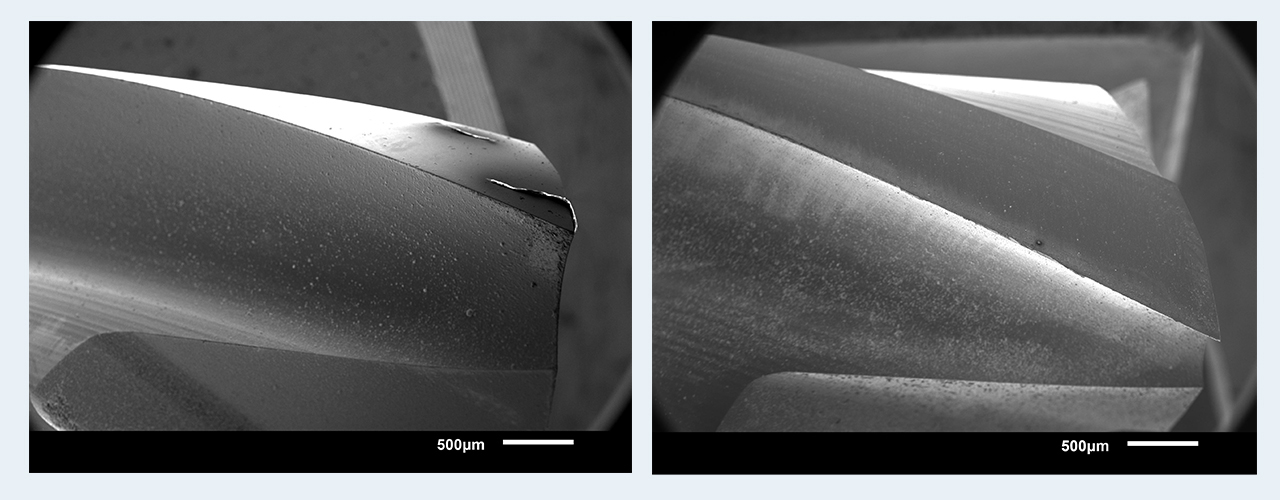Edges with defined geometry (e.g. with special edge radius, wedge angle, etc.) are a common geometric element in engineering. Cutting tools, for example, are usually provided with cutting edges. To improve wear resistance, cutting edges are often coated with hard materials. However, the applied coating increases the edge radius, which corresponds to rounding or blunting. A coating technology developed at the IWS solves this problem. Edge radii of growing layers are adjustable within certain limits. Thus, even edge radii smaller than those of the uncoated tool can be achieved.
Coating of Cutting Edges

Specimen with defined edge radius (10 µm) before coating on the left and afterwards on the right, a clearly sharper edge has grown up (layer: TiN, 9.8 µm thick).

Cutting edge of a coated end mill with sharpening effect after coating (left) and after aluminum machining (right), the edges are stable with only slight wear (coating: AlTiN, approx. 7 µm)

Cutting edge of a cutter knife, left: uncoated, center: coated without sharpening effect, right: coated with sharpening effect (layer: AlTiN/TiN multilayer approx. 7,7 µm).
 Fraunhofer Institute for Material and Beam Technology IWS
Fraunhofer Institute for Material and Beam Technology IWS